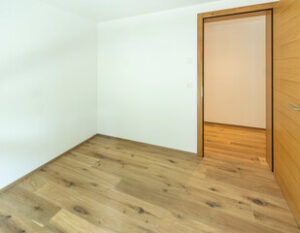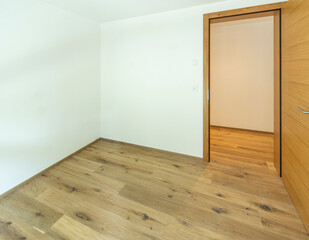Flooring plays a major role in how your home looks. It also influences comfort and how well a room functions.
Many homeowners seek unique flooring alternatives like concrete, natural stone, cork, and bamboo that provide a stunning look and exceptional performance. Concrete floors add industrial chic to loft-style homes, while travertine and marble offer luxe elegance to bathrooms and kitchens.
Engineered wood is a great choice for those who want the look of real hardwood but prefer a more durable floor. It’s easier to install and maintain than solid wood, and it can be refinished if needed. It’s also available in a wide variety of styles, textures and colors. It’s important to find a quality engineered hardwood floor that has a protective sealant on it to protect the finish from scratches, moisture and other damage.
Engineered hardwood comes in a wide range of widths and lengths, making it easy to match your floor with the style of your home. The planks can be cut to size and are usually glued together using tongue-and-groove boards that lock into place. It’s also possible to get them in click-lock format, which makes installation even simpler.
When shopping for engineered wood flooring, look for a brand that uses sustainable materials. Some manufacturers use a glue that contains less formaldehyde than others, which is an advantage if you’re concerned about the environment. Some brands also use a cross-grain construction, which reduces the chances of warping caused by changes in humidity.
Another thing to consider when choosing a wood floor is whether you want it to be smooth or rough. Smooth floors are more hygienic and less likely to show dust, dirt or pet hair. Rough floors have a more distressed appearance and can give a room an antique or rustic feel.
There are many options when it comes to textured engineered wood, with the most popular being wire brushed and hand scraped. Wire brushed is a more uniform texture, while hand scraping has an irregular texture. Both can add an authentic, natural look to any room.
If you’re considering buying engineered wood, make sure the manufacturer is reputable and has a good warranty. It’s also a good idea to look for an eco-friendly product that uses low-VOC finishes and a Baltic birch plywood base that is certified as WBP (Weather & Boil Proof).
The most important thing to remember when caring for engineered wood is to sweep regularly to remove dirt, pet hair and other debris. Regular sweeping helps prevent dirt buildup that can dull the surface and leave behind scratches. It’s also a good idea for homeowners to put down rugs, mats or felt furniture sliders underneath chairs and other frequently used pieces of furniture. It’s also a good idea not to expose your engineered wood to standing water or use harsh cleaners, as this can cause damage.
Natural linoleum
Linoleum is a beautiful and durable flooring material that’s been around for centuries. It’s a natural and renewable resource that’s easy to maintain. It resists oil, grease, disinfectants, and many solvents, meets slip-resistance standards, and works well with underfloor heating. It also has low flammability and is naturally antistatic, making it ideal for offices with computer equipment. In addition, linoleum is more easily repaired than vinyl.
Linseed oil gives linoleum its name, a Latin mashup of “linum” (flax) and “oleum” (oil). Other ingredients include pine rosin, sawdust, cork dust, ground limestone, and pigments pressed onto a jute backing. Modern linoleum, made by manufacturers such as Marmoleum/Forbo, is available in sheet and tile form. Both types feel soft and comfortable underfoot. It’s also resistant to stains and scratches and can withstand the heavy traffic of an active family. It can even be refinished and repainted, making it an excellent choice for high-traffic areas.
Like wood floors, linoleum is a natural insulator and reduces noise. It’s easy to clean and dries quickly. However, the softer surface can be dented by furniture legs or other heavy items. It’s also prone to water damage if spills aren’t cleaned up immediately. This can be mitigated by sealing it periodically with a urethane sealant.
Both sheet and tile linoleum come in earthy colors that look great with a variety of decor styles, including traditional, eclectic, and contemporary. Its distinctive marble patterns help hide dirt, and the swirls make scuff marks less visible. Although it’s not as durable as vinyl, linoleum lasts for 25 to 40 years and is recyclable and biodegradable.
The linoleum industry has worked to improve the sustainability of its products. The embodied energy of linoleum is significantly lower than that of vinyl, and the material can be recycled indefinitely. It’s also more energy-efficient than solid wood, and it has a lower carbon footprint. It’s also easier to clean than solid wood. Its durability and sustainability will likely be a selling point to prospective homebuyers. It’s also a better choice than carpeting for those concerned about allergens.
Bamboo
Bamboo is an eco-friendly floor material that can be used in a variety of home applications. It is a versatile and durable flooring option, offering the same level of strength as hardwood floors. However, it is important to choose the right type of bamboo for your space. There are several factors that affect the quality of bamboo flooring, including the harvesting process and the way it is processed. Unlike hardwood, bamboo is a plant that requires proper maintenance and care. This is especially true for strand-woven bamboo, which can be prone to scratches and warping.
The most popular types of bamboo flooring are woven strands and solid planks. The woven strands are made of strips that have been arranged in rows and then bonded together using an adhesive. The result is a product that resembles traditional wood flooring and can be stained or oiled to achieve the desired look. Solid planks are made of strips that have been glued together to create a flat surface. These floors are typically finished with a protective coating to reduce damage and wear.
Whether nailed down or glued to the subfloor, bamboo floors are available in a wide range of colors and styles. Many manufacturers also carbonize bamboo to create a darker color similar to oak wood. This process may increase the longevity of the floor. It also makes the bamboo harder and more durable.
While bamboo is less susceptible to water damage than hardwood, it can still be damaged by too much moisture. Over time, excessive moisture can cause the bamboo to swell or even grow mold. This can be a problem for homes with humidity fluctuations throughout the year.
Bamboo floors can be nailed down or glued to the floor, but nailing results in tighter results than other installation methods. Some installers also use a secret-nail technique that involves hiding the nails inside of the grooves of each board. These techniques are more time-consuming than the other installation methods, but they can help to keep the cost of the bamboo down. It is also important to look for bamboo floors that are certified as low-VOC by a reputable organization, such as Greenguard or FloorScore. Lower-quality bamboo floors may contain glues that release toxic chemicals, such as urea formaldehyde, into the air in your home or commercial space.
Porcelain tile
Porcelain tile is a new variety of ceramic that offers a lot more benefits than its traditional counterparts. It is harder and denser, and it can withstand heavy foot traffic and splashed water. It is also a great choice for countertops and backsplashes. The tiles are available in a wide range of colors and designs, and they are easy to clean. You just need to wipe up spills as soon as they happen, sweep or vacuum regularly, and damp mop weekly.
Porcelain tiles are made using fused clay minerals that are molded under extreme pressure. They are kiln-fired to 2500F, which both sets the glaze and bakes out any remaining moisture. This makes them super dense and impervious to water, which prevents subfloor damage and mold growth. The tiles are typically glazed, but you can buy them unglazed as well.
The beauty of porcelain tiles is that they mimic the look of natural materials like wood and stone, and are available in a variety of styles and colors. Some even have a unique texture that adds to the flooring’s durability and visual appeal. They are a good choice for homes with children and pets because they resist stains, scratches, and chips more than other tile alternatives.
They are also highly durable and can withstand heavy foot traffic for decades. These features make them a popular choice for homeowners, and they are ideal for commercial spaces, including stores, restaurants, and hotels. They can even be used outdoors, provided they are properly sealed and maintained.
When choosing the right type of porcelain tile for your home, it is important to consider its PEI rating. A PEI rating of 5 or higher indicates that the tile is resistant to scuffing and scratching, which means it can hold up to heavy foot traffic. A PEI rating of 3 or lower, on the other hand, indicates that the tile is sensitive to scuffing and scratching, and should only be used in low-traffic areas.
If you are looking for a durable floor that will last for years, then porcelain tiles are the perfect option. They are more expensive than ceramic tiles, but they will last longer and are less prone to chipping. In addition, they are easier to clean than other types of tiles and require little maintenance.

